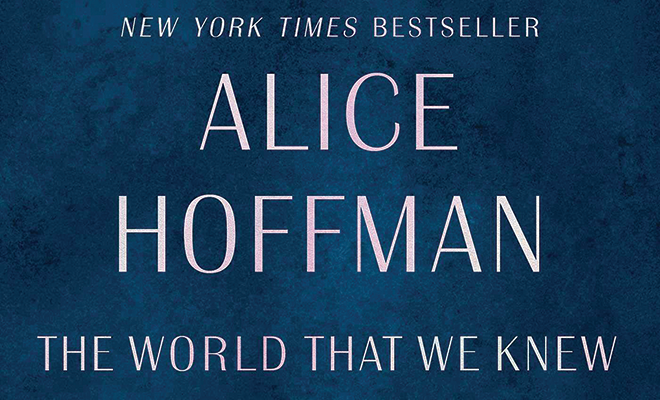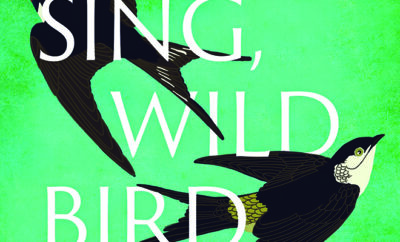
The World That We Knew by Alice Hoffman
Alice Hoffman’s newest novel, The World That We Knew, is set in Europe during the beginning of World War II. In the spring of 1941, life for the Jews became more and more difficult. Hanni Kohn is increasingly worried about her 12-year-old daughter, Lea.
Hanni decides to go to the rabbi and have him create a golem to protect her. When she arrives at the rabbi’s house, she is refused; but the rabbi’s daughter, Ettie, follows Hanni and tells her that she will create the golem. Desperate, Hanni agrees.
Golems are mystical creatures of Jewish legend. Made of mud, they are endowed with immense strength, need little food or sleep and are loyal to their human. Golems must be destroyed when their mission is completed in order to save the world from soullessness. The golem, Ava, has the mission to protect Lea at all costs, and Lea is told she must destroy the golem once she is safe. Lea is accompanied by Ettie, Ettie’s younger sister, Marta, and Ava to Paris. Marta is killed as the girls jump off a train. Ettie is separated from Ava and Lea, who manage to get to Lea’s cousins in Paris. Thus, the story is set in motion and follows the lives of the three girls over the next three years.
In Paris, Lea meets Victor and Julien. Lea and Julien like each other and eventually fall in love. Their love story is a main thread of the novel. Victor is older and joins the Resistance as a bomb-maker. Ava, through her magical ability to learn languages, including birdsong, is warned by a heron that the Nazis are planning a mass roundup of Jews. Ava and Lea flee Paris to a convent in the Rhone Valley and later to a small village deep in the forest. Ettie also joins the French Resistance and meets Victor, Julien’s older brother.
The Resistance not only blows up bridges, but members also act as couriers and provide refugees with forged documents, enabling them to travel throughout France. Many French nationals helped the Resistance by providing shelter and escorting them across the mountains into Switzerland. Marianne was one such heroine who, while living on her father’s farm, begins life as a guide for the children being sent to Switzerland. Marianne realizes that this is the work she was destined to do and does so until the end of the war.
The novel is filled with magic on many levels. The golem is a mystical creature that Hanni believes can save her daughter. The reader must “believe” in the magical, but soulless, creature of Jewish legend. Ava, the golem, knows when her mission is done, she will be destroyed. Since she isn’t human, this will not be murder. However, as the novel progresses, the love between Lea and Ava and Ava and the heron deepens. The end of the story demonstrates the immense power of such love.
The love between the human characters is another main thread of the novel, as Hoffman has given us several more love stories to follow. There’s the puppy love of Lea and Julien, beginning when Lea is only 12. At the novel’s end, she is still only 15, but her love for Julien has deepened into a more mature romantic love.
The love of a sister for another sister is told in the story of Ettie’s love for her sister, Marta. Ettie agreed to make the golem only if Hanni would allow Ettie and Marta to try to escape with Lea and Ava. Marta is shot by a soldier and doesn’t make it to Paris. Ettie, though distraught, works at several jobs until she makes contact with the Resistance and, later on, Victor. Her love of Marta and her desire for revenge color her outlook on life.
Humans make many sacrifices to protect their young. Undoubtedly, the greatest love is the sacrifice that parents make for their children when faced with extreme circumstances. Hanni is driven to seek help in creating a golem to save Lea. Ettie, although she’s Marta’s sister, not her mother, is placed in the same situation. What must she do to save Marta? Victor and Julien’s parents make the ultimate sacrifice in order to save Julien.
While the message of the novel is love in all its many forms, each of these children travels past the Angel of Death during their journey. Only their perseverance and fortitude save them from death by the Nazis. The novel also amplifies our knowledge of what life was like for the many Jews, both children and adults, during the war. Hoffman proves that the world that we knew was a place worth fighting for and bettering. ■
Sources: nytimes.com, jewishbookcouncil.org and nyjournalofbooks.com.







